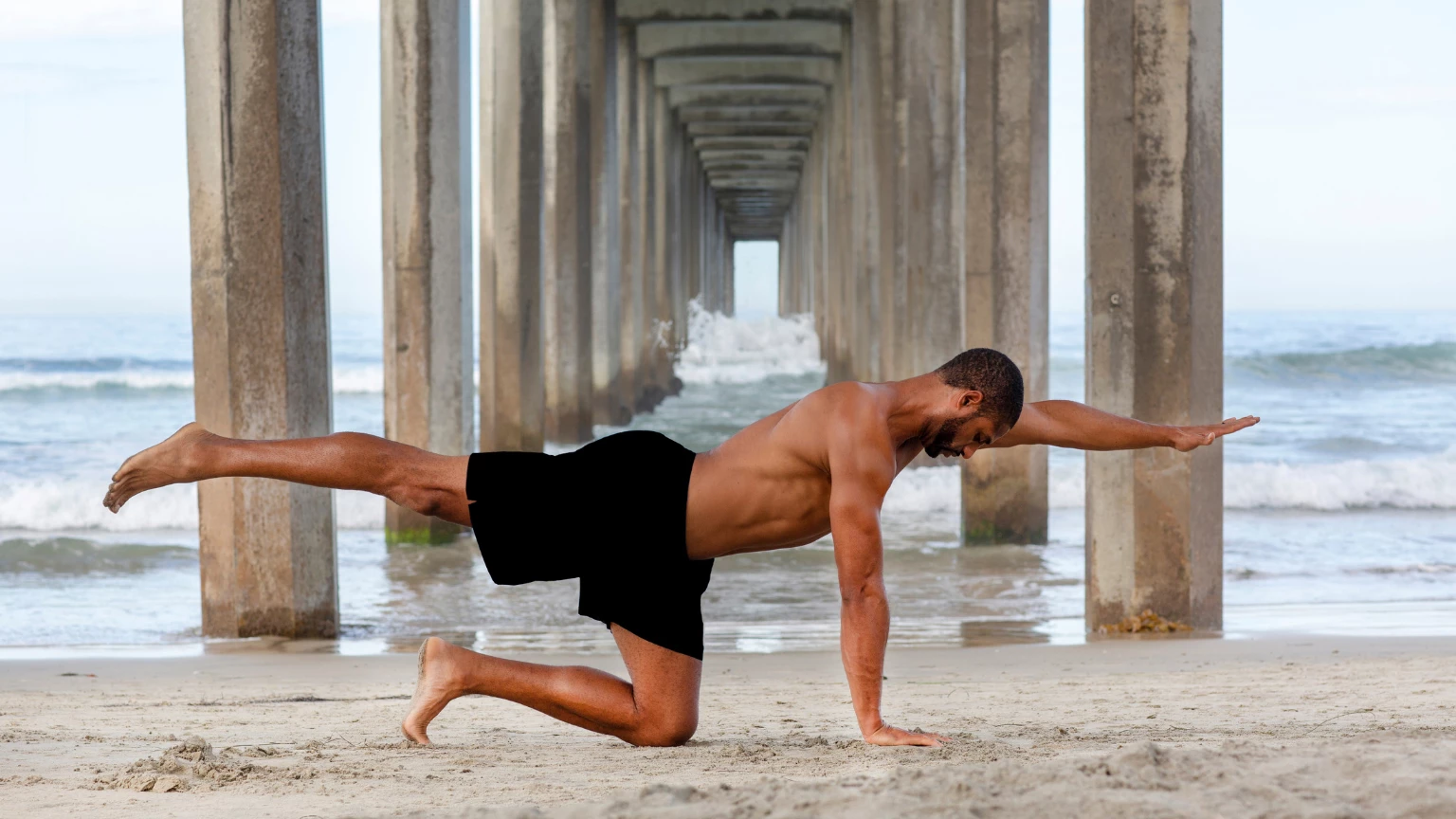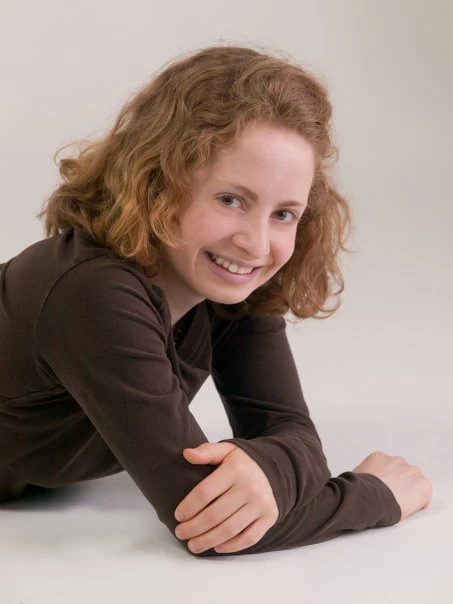Bringing It All Together: A Yoga Sequence to Promote Right/Left Brain Integration

As thinking and feeling people, who execute hundreds of actions each day, we have both left- and right-brain “modes.” We used to believe that left-brain functions are analytical and logical, used for things like mathematics and language, and right-brain functions are creative and exploratory, used for endeavors like music and graphics or visual arts. Modern neuroscience has discovered that it’s not that “cut and dried.” Right-and left-brain modes work together to do these hundreds of actions each day.
The reality is that the two brain modes see the world, and thus approach tasks, in different ways. The left brain is detailed and functional, and the right brain is holistic and considers the “bigger picture.” Even so, many average people still classify themselves as “right-brained” or “left-brained.” They might be quite right that they’re creative thinkers and drawn to artistic endeavors (right-brained), or very logical and good at mathematics (left-brained).
Yet all people (apart from, of course, cases of severe mental illness and cognitive disease) have some level of access to both brain modes. Again, we need access to that dual-brain mode action in order to fully function in our lives. The hard thing can be getting the right and left brains to work smoothly together, to use both those modes in how we see the world and function within it, allowing us to be both creative and analytical, drawn to big questions but also to questions of logic.
How do we do that? Working with and across the right and left sides of the body, through yoga poses and flows, can really help! The following sequence can lead to stronger, clearer right-left brain integration, so you can go forth and succeed in your day, in both creative and logical endeavors. Om Shanti!
Marjarasana (Cat/Cow Pose) and Bharmanasana (Tabletop Pose) Flow
- Set up Bharmanasana, shoulders over wrists and hips over knees. Make sure that your biceps are spinning forwards and at the same time, every inch of your hands is grounded down. Some of our skeletons are designed such that we need to spin the fingers outward (toward the edges of the mat) in order to have both of those things happening at the same time. If your skeleton is one of those, go ahead and do that.
- Feel your tailbone move upward so that your low back dips down. Let that movement sequence through to your neck, so that you look up to the sky. Let your shoulders roll back. Breathe in. This is Cow Pose.
- Now move the tailbone downward, so that your back arches upward and your head drops. Breathe out. This is Cat Pose. (below) Move through this Cat and Cow (following this sequence, moving from one pose to the other) for at least five rounds.
- Then look back at each foot five times, alternating side to side (looking over opposite shoulders each time), to find side bends.
- Come back to Tabletop Pose, with a neutral spine (back flat, rather than in Cat or Cow). Move into to Parsva Balasana (Bird Dog Pose) (below), raising your right leg long and back and your left arm long and forward (leg coming directly out of the hip, and arm coming directly out from the shoulder).
- In the right raised leg, feel the inner thigh spiral up to the sky. Flex the flying foot hard (this will engage the muscles that help lift the leg). In the raised arm, spin the pinky edge down.
- Look both out and down, so that both your throat and back of the neck are as long as possible.
- Take 3 to 5 breaths here, and then practice the same on the other side.
Adho Mukha Svanasana (Downward-Facing Dog Pose) and Variations
- From Tabletop Pose, walk your hands just a few inches forward. Then ground into them, and the balls of your feet, and lift your pelvis, then straightening your arms and legs to move into Downward-Facing Dog Pose.
- Maintain all of the actions in your hands and arms that you practiced in Tabletop Pose. Feel your thighs draw backward, your forearms lift, and your middle-back push away from your mat (especially if you’re rather flexible in the upper back).
- Maintain all of those actions, but make your Downward-Facing Dog Pose wider and shorter (think Corgi dog) by stepping your feet about six inches forward and almost as wide as your mat.
- Lift your left hand and, if you can remain stable, take your left hand to your right leg, above or below your knee but not on the knee. Look under your right arm.
- Breathe into the twist. If this variation is a bit too much for you today, try not to get attached to doing it, and stay in your neutral Downward-Facing Dog Pose.
- Take either variation for 5 to 10 breaths. If you’re practicing the twist, take the other side for the same number of breaths.
- Take Three-Legged Downward-Facing Dog, raising your right leg and taking the same actions in that leg as you did in Bird Dog Pose (flexing your foot and spiraling your inner thigh upward).
- Bend your knee and open your hip toward the right side. Make sure not to shorten the left side of your torso; lift the left forearm a half-inch and lower the right forearm a half-inch.
- Hold for five to ten breaths, and practice Three-Legged Dog and its open-hip variation of this on the left side.
Seated and Supine Poses
- From Downward-Facing Dog Pose, come to a seated position in whichever way works best for you (through a squat, a “jump-through,” et cetera).

- Lengthen your legs forward to sit in Dandasana (Staff Pose). Feel grounded in your seat, yet lifted in your torso, like a straight, strong, tall tree coming directly out if its roots (make sure to not lean forward or backward). If you’re on the tighter side in your hips, sit on a folded blanket.
- Reach your arms up overhead (Seated Urdhva Hastasana), and twist to the right, taking the back of your left hand to the outside of your right thigh, and your right hand behind you. If you have to lean back to place that back hand down, or even tent the fingers of that hand (which often has to do with unique physical proportions), place a block underneath it.
- Take 5 to 10 breaths here. Try to lengthen up a little through your spine as you breathe in, and twist just a bit more as you breathe out. You’ll add on with each breath, for a long spine and deep twist by your last breath.
- After 5 to 10 breaths, return to the center, pause for a few breaths and then practice the twist on the other side.
- Lie down onto your back with your knees bent and the soles of your feet on the floor. Plant your right foot down into your mat, but bring your left knee into your chest, and then take left the leg out to the left, but not so far that the right hip rises any higher.
- After a few breaths, press your right foot into your mat to shift your hips a bit to the left.
- Then let your left leg fall over to the right, and the right leg to lengthen long, to take a Parivrtta Supta Eka Padangusthasana (One-Legged Supine Twist Pose). (right)
- Look toward the left. Notice where in your body where you might be able to soften and try to soften there, especially on exhalations.
- Breathe here for 5 to 10 breaths, then raise the knee back to the center.
- Switch legs to practice these two poses on the other side.
Study with YogaUOnline and Tias Little: The Spine As A Sacred Channel
Yoga For Every Body: How to Adapt Poses for Different Situations and Conditions and Purposes a course from YogaUOnline and Olga Kabel.
 Kathryn Boland is an RCYT and R-DMT (Registered Dance/Movement Therapist). She is originally from Rhode Island, attended The George Washington University (Washington, DC) for an undergraduate degree in Dance (where she first encountered yoga), and Lesley University for an MA in Clinical Mental Health Counseling, Expressive Therapies: Dance/Movement Therapy. She has taught yoga to diverse populations in varied locations. As a dancer, she has always loved to keep moving and flowing in practicing more active Vinyasa-style forms. Her interests have recently evolved to include Yin and therapeutic yoga, and aligning those forms with Laban Movement Analysis to serve the needs of various groups (such as Alzheimer’s Disease patients, children diagnosed with ADHD, PTSD-afflicted veterans – all of which are demographically expanding). She believes in finding the opportunity within every adversity, and doing all that she can to help others live with a bit more breath and flow!
Kathryn Boland is an RCYT and R-DMT (Registered Dance/Movement Therapist). She is originally from Rhode Island, attended The George Washington University (Washington, DC) for an undergraduate degree in Dance (where she first encountered yoga), and Lesley University for an MA in Clinical Mental Health Counseling, Expressive Therapies: Dance/Movement Therapy. She has taught yoga to diverse populations in varied locations. As a dancer, she has always loved to keep moving and flowing in practicing more active Vinyasa-style forms. Her interests have recently evolved to include Yin and therapeutic yoga, and aligning those forms with Laban Movement Analysis to serve the needs of various groups (such as Alzheimer’s Disease patients, children diagnosed with ADHD, PTSD-afflicted veterans – all of which are demographically expanding). She believes in finding the opportunity within every adversity, and doing all that she can to help others live with a bit more breath and flow!



